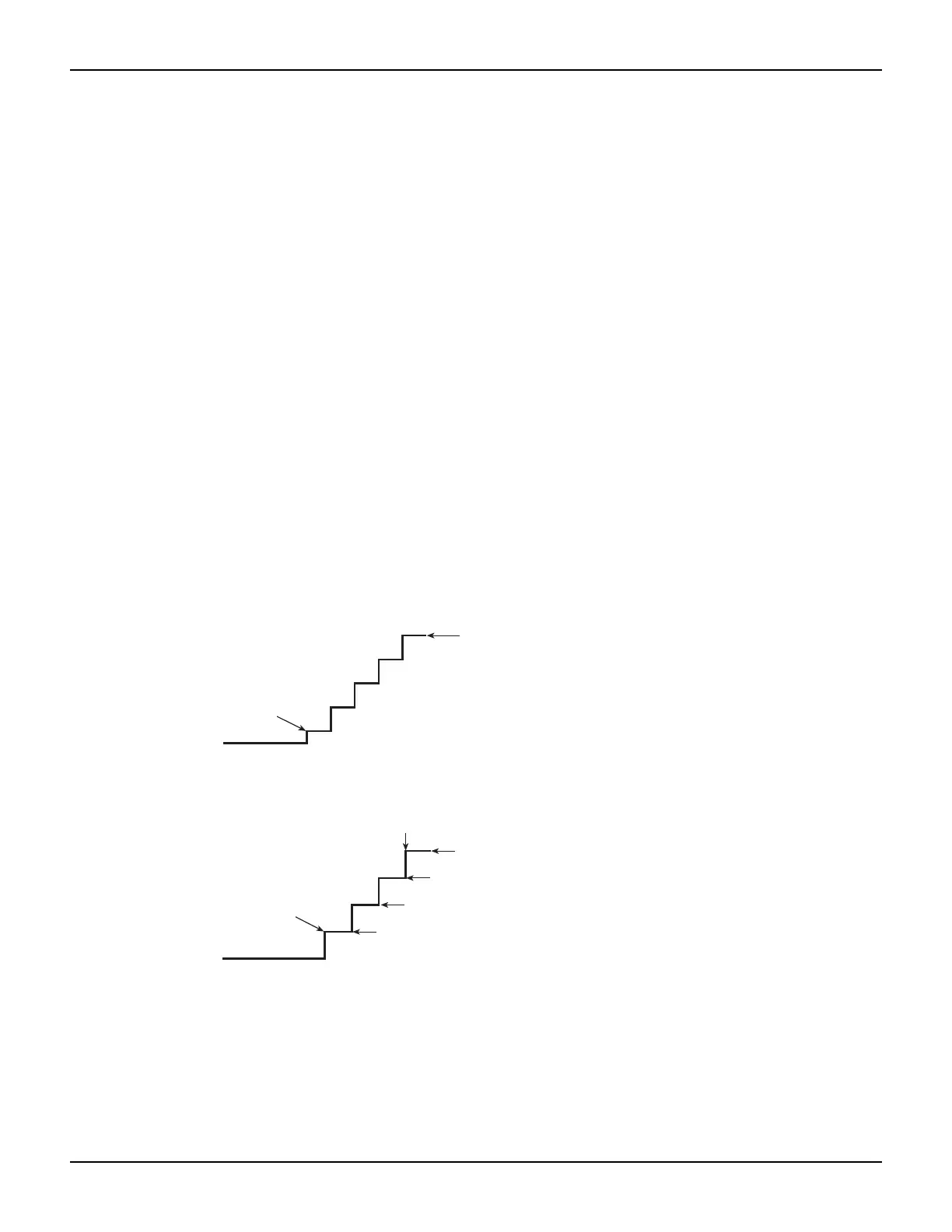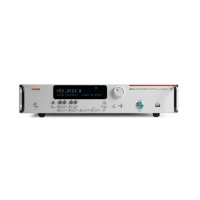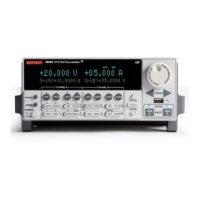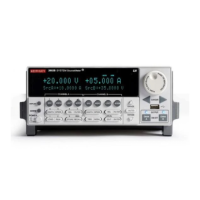2600S-901-01 Rev. C / January 2008 Return to Section Topics 8-3
Series 2600 System SourceMeter® Instruments Reference Manual Section 8: Source-Measure Concepts
Compliance principles
Compliance acts as a clamp. If the output reaches the compliance value, the SourceMeter will
attempt to prevent the output from exceeding that value. This action implies that the source will
switch from a V-source to an I-source (or from an I-source to a V-source) when in compliance.
As an example, assume the following:
SourceMeter: V
SRC
= 10V; I
CMPL
= 10mA
DUT resistance: 10Ω
With a source voltage of 10V and a DUT resistance of 10Ω, the current through the DUT should
be: 10V/10Ω = 1A. However, because the compliance is set to 10mA, the current will not exceed
that value, and the voltage across the resistance is limited to 100mV. In effect, the 10V voltage
source is transformed into a 10mA current source with a 100mV compliance value.
Sweep waveforms
Staircase sweeps
There are two basic staircase sweeps: linear staircase and logarithmic staircase as shown in
Figure 8-1. The linear staircase sweep goes from the start level to the stop level in equilinear
steps. The logarithmic staircase sweep is similar except it functions on a log scale with a specified
number of steps per decade. See
Section 5 for more details on sweep operation.
Figure 8-1
Two
Bias
Start
Stop
A: Linear Staircase Sweep
Bias
Start
100
B: Logarithmic Staircase Sweep
10
1
0.1
Stop
Logarithmic scale
shown for staircase
basic staircase sweep waveforms
Typical applications for staircase sweeps include: I-V curves for two- and three-terminal
semiconductor devices, characterization of leakage versus voltage, and semiconductor
breakdown.

